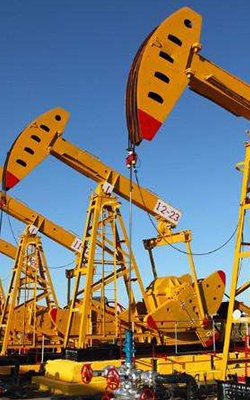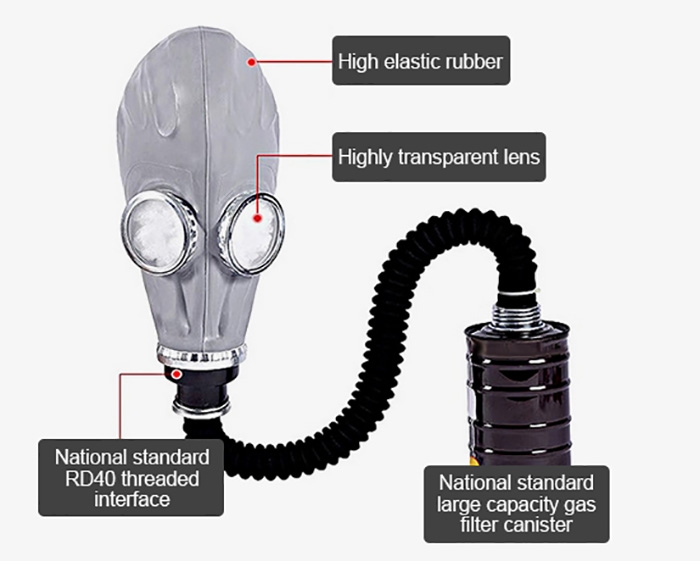A full mask respirator made of rubber material has different types of canisters be selected. The gas mask respirator material is safe, and the PC glasses frame is clear and impact-resistant. The respirator mask for painting can be used in the chemical industry, painting, dust prevention, and other occasions.

Durable rubber respirator PC glasses
- The full face dust mask with clear PC glasses and wide field of vision, tempered glass material can withstand high-speed impact.
- The face mask for painting adopts metal edging, durable, and strong sealing.

Comfortable safety rubber mask to wear
- Rubber gas mask material is non-toxic and environmentally friendly, silicone mouth and nose mask is made of the same material as baby pacifiers.
- Soft and fits the face, an air purifying respirator mask can be comfortable to wear for a long time.

Sealed air supply hose for smooth breathing
- Fully sealed air supply hose, strong airtightness, smooth breathing.
- Different masker respirator filters can be replaced according to the protection environment to prevent micro particles.
Application
A respirator mask is a personal protective equipment worn on the head to protect the respiratory organs, eyes, and face from toxic substances such as poison gas, dust, bacteria, or steam. The masker gas respirator is mainly composed of filter elements, mask bodies, eye windows, exhalation communication devices, and headbands. The respirator filter canister is the core component of the gas mask, and the filter material filled inside it directly affects the protective performance of the mask. It is widely used in the fields of petroleum, chemical industry, mining, metallurgy, military, firefighting, disaster relief, health and epidemic prevention, science and technology, environmental protection, machinery manufacturing, etc.

Oil

Chemicals

Dust

Military
| Model | SISCO-RM-4001 |
| Mask material | Silicone |
| Lens material | PC |
| Face seal material | Rubber |
| Packaging | Full face mask + 0.5m tube + filter tank (optinal) |
| Filter layer type | Activated carbon |
| Weight | 1kg |
Rubber respirator mask structure

Filter tank

Gas filter canister
- No. 1 tank
Protective objects: hydrocyanic acid, cyanogen chloride, arsine, chloropicrin, benzene, dichloromethane, phosphine, etc. - No. 3 tank
Protective objects: benzene, chlorine, acetone, alcohols, aniline, carbon disulfide, carbon tetrachloride, chloroform, methyl bromide, chloromethane, nitroalkane, chloropicrin - No. 4 tank
Protective objects: ammonia, hydrogen sulfide - No. 5 tank
Protective objects: carbon monoxide - No. 7 tank
Protective objects: acidic gases and vapors: sulfur dioxide, chlorine, hydrogen sulfide, nitrogen oxides, phosgene, phosphorus and chlorine-containing organic pesticides - No. 8 gas filter canister
Protective objects: hydrogen sulfide
Applicable to sewage treatment, metal refining, papermaking, dyes, rubber, pesticides, medicine, chemical experiments and other environments that produce hydrogen sulfide gas. For example, this gas filter canister can be worn for protection when working in sewage plants
Q1: What is a respirator mask?
A1: A respirator mask is a type of protective respiratory equipment designed to filter out harmful gases, vapors, and particulates in industrial settings. These chemical masks are commonly used in workplaces where workers are exposed to hazardous airborne substances such as chemicals, toxic fumes, dust, and biological contaminants.
Q2: How does a respirator mask work?
A2: When the user breathes in, air passes through filters or cartridges designed to trap specific contaminants. Gas mask respirator filters can remove dust, fumes, and biological agents, while chemical cartridges absorb toxic gases and vapors. Use fine fibers (like HEPA filters) to trap airborne particles such as dust, smoke, and biological hazards. Cartridges contain activated carbon or special chemicals that neutralize toxic gases and vapors (e.g., organic vapors, ammonia, acid gases).
Q3: What are the types of respirator masks?
A3: Air-Purifying Respirators (APRs): These masks filter contaminants from the surrounding air before the user breathes them in. They do not supply oxygen, so they are ineffective in low-oxygen environments. Powered Air-Purifying Respirators (PAPRs): Often used in asbestos removal, pharmaceutical production, and biohazard environments. More comfortable for long-duration wear. Supplied Air Respirators (SARs): These provide clean air from an external source, rather than filtering the surrounding air. Escape Respirators (Emergency Gas Masks): Designed for short-term use during emergencies.
Tip: How to clean a rubber respirator mask?
Before cleaning the mask respirator, you need to remove the filter material first. You can use warm water and detergent/soap water/rubber cleaner to dip a damp cloth in an appropriate amount of cleaning liquid and gently wipe the surface of the rubber gas mask parts. You can also soak the full face paint mask in warm water below 40℃ or 49℃ for cleaning. After cleaning, you can use 75% alcohol, 0.5% potassium permanganate solution, sodium hypochlorite solution, etc., for disinfection.
Thank you for buying industrial test and measurement equipment on SISCO.com, all products sold by SISCO and the partner cover a 12 months warranty, effective from the date of receiving the products.
What is covered?
SISCO is responsible for providing free spare parts, and free technical support to assist the customer to repair the defective products until the problem is solved.
What is not covered?
- Product purchased from anyone other than a SISCO store or a SISCO authorized reseller.
- Expendable parts.
- Routine cleaning or normal cosmetic and mechanical wear.
- Damage from misuse, abuse or neglect.
- Damage from use of parts other than SISCO approved.
- Damage from use outside the product’s usage or storage parameters.
- Damage from use of parts not sold by SISCO.
- Damage from modification or incorporation into other products.
- Damage from repair or replacement of warranted parts by a service provider other than a SISCO authorized service provider.
- Damage caused by the application environment not meeting the product usage requirements and the failure to perform preventive maintenance.

